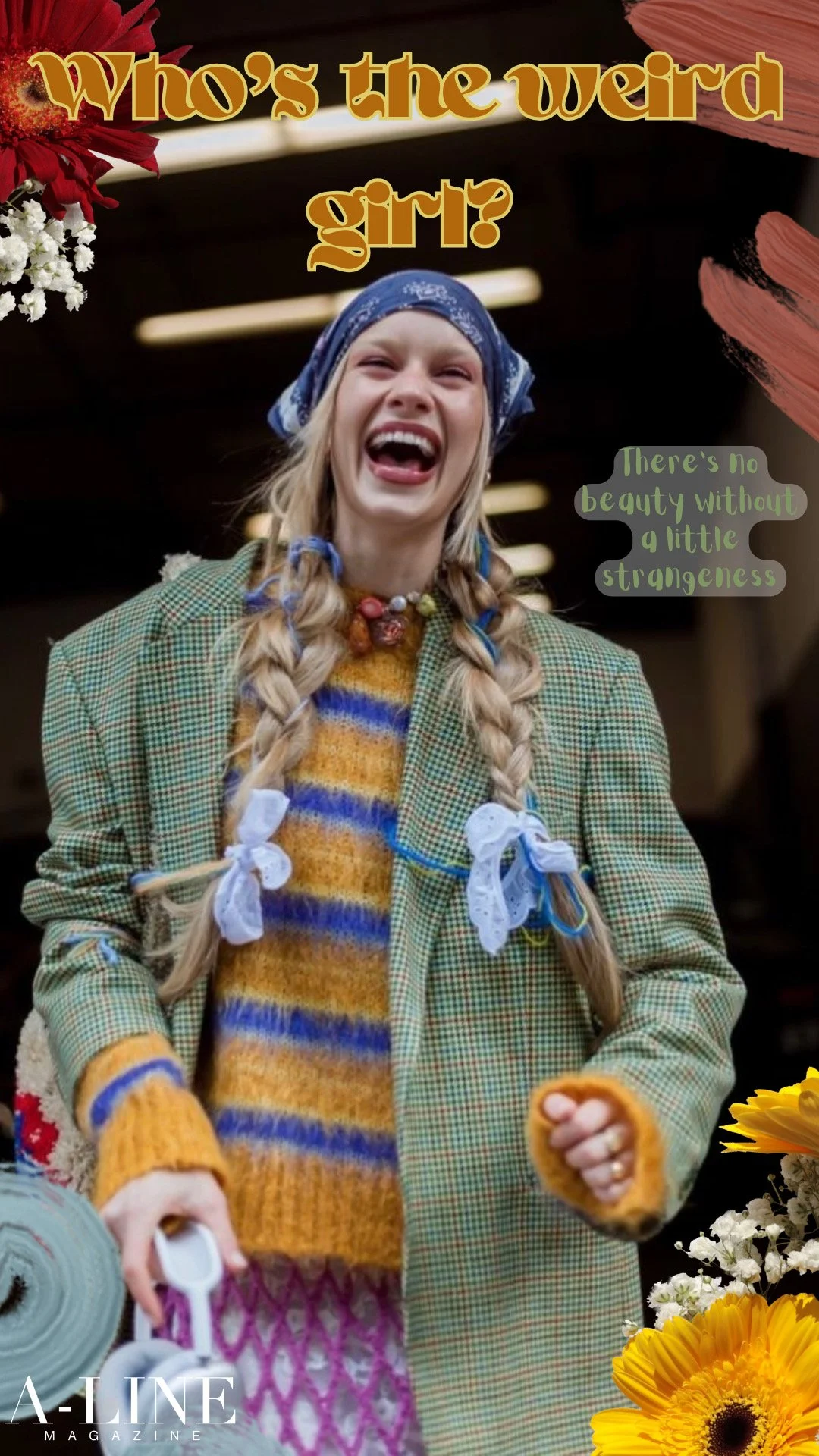Who's the weird girl?
This summer, the internet encountered an emergence of yet another micro-trend; this time, a style suited for the Harper Finkles of the world or those with an odd fondness for layering. The cryptic, catchy, and ultimately confusing phrase "weird girl aesthetic" was initially coined by @kaiageber (not to be confused with the Crawford), who shared photos featuring models in a slew of mismatched prints, patchwork skirts, and plenty of fuzzy accessories. The caption, on the other hand, caused further commotion when it asked what everyone has been wondering since the dawn of aesthetics: “Does it only work on Bella Hadid?”
Although searches for minimalist clothing brands have become increasingly popular and elevated basics are more accessible than ever, a new wave has begun to embrace their inner kookiness: distinguishing themselves from the rest of the fashion world with a Depop-ified virtue signal. The weird girl’s redemption arc has been long overdue. "Weird," which was once a derisive term lobbed throughout middle school cafeterias, is now almost a term of endearment for people who have a certain style of harmoniously incompatible pieces. They value one-of-a-kind, often handmade or secondhand finds that reflect their personality with little reason to buy an exclusive item or brand to fit in. If ‘cool girl’ wears vintage rings and loose Levi’s, her more eclectic sister sports multiple on each finger with a couple of necklaces and a chunky hat all while sporting head-to-toe patchwork denim. To the untrained eye, it may appear counterproductive, but her goal is to be unique rather than digestible. Above all else, it is about dressing for oneself.
Historically, trend cycles consisted of five stages: introduction, rise, peak, decline, and obsolescence, cycling every 20 years or so. However, TikTok-fueled micro-trends may thrive for only a matter of weeks before being relegated to their specific brand of ‘basic.’ Naturally, this is all subjective, and owning these pieces does not denote one as uncool, but the concern lies more with the facilitation of fast-moving trends and attitudes towards outfits that are no longer ‘in style’. This may be why the underlying intention of the weird girl aesthetic feels particularly persistent. The main draw is that it reverses the conventions of other trends. Normally, the rules are firm: A self-identifying coquette, for example, would utilize bows and ballet flats; half of gorpcore is their dedication to Patagonia. Moreover, this look does not subscribe to any one decade. There is an undercurrent of both 90s and Y2K styles, as well as Gilded Age femininity, but it is not overtly nostalgic. It feels comfortably out of time, incorporating eras and ideas that are immune to passing trends. The weird or funky girl aesthetic is a backlash against the hyper-categorization of style and contests any standards of dressing.
Arguably because they do not fit the conventional mold, a new wave of Gen Z influencers are capturing this peculiar aesthetic far better than any celebrity stylist could. Clara Perlmutter, known as @tinyjewishgirl on social media, recognizes that the weird girl aesthetic is understated but eccentric. Relying on intentionally clashing patterns, elaborate textures, and unhinged cutout tops, the ‘tinyjewishgirl’ look is a charming lesson on personal style. In 2022, she responded to a question regarding her outfit on the online blog OGBFF by saying, "What a potentially sexy question with a moderately disappointing answer." Perlmutter gave a rundown of her relatively casual outfit consisting of an airbrushed Hieromaar hoodie layered over a Hollywood Gifts99 baby tee, flared tie-dye sweatpants, and her boyfriend's diesel shoes. "I've always gone for things that are more eclectic and I've never been afraid to experiment," she told Paper Magazine, "things that don't make sense together are what I aim for."
However, one could not continue without acknowledging Emilia Fart's brief internet presence. This mid-2010s influencer is known for her signature red lip and poetic musings uploaded onto YouTube, in which she typically wore oversized robes and floor-length tulle skirts. She pioneered weirdness before it was trendy, then abandoned her channel before she could be properly acknowledged. Emilia Fart occupies a niche that is exclusively hers. Adorned with blue hair, orange eyeshadow, and a rather large neck scarf, she marries absurdity with relatability. As she aptly puts it, “Well, that's just what I wear and what I think looks cool and also works well with my insecurities.” She embodies the quintessential weird girl.
The weird-assiance stands as a symbol of unbridled self-expression in a climate that leans towards categorization and conformity. At its purest, it is playful, devoid of monotonous curation, and genuinely fulfilling. The weird girl aesthetic, at its core, serves as a testament to the enduring power of embracing one’s unique, unconventional self. At the end of the day, style is subjective. One man’s trash is another woman’s treasure.
Written by Catherine White, Social Media: Manuela Diez

